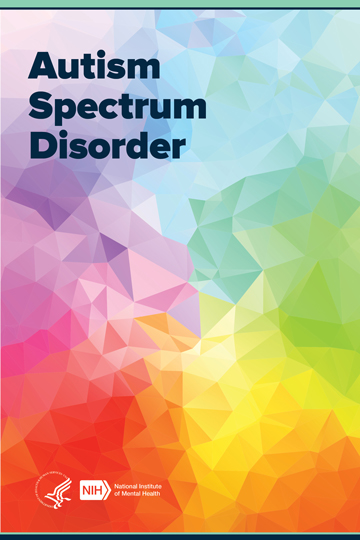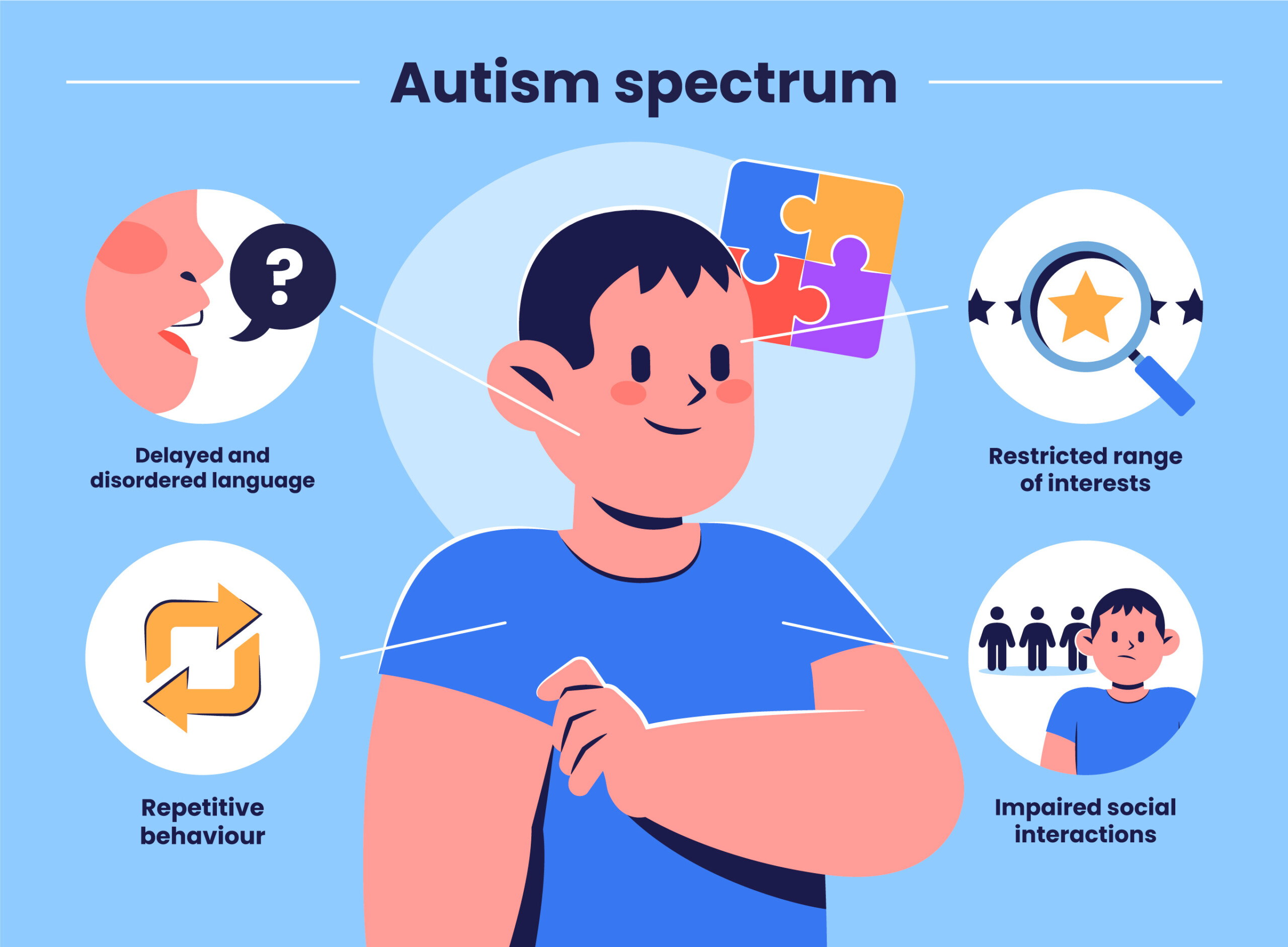How an Aba Therapist Near Me, families see measurable progress in social and communication growth
How an Aba Therapist Near Me, families see measurable progress in social and communication growth
Blog Article
Recognizing the Effect of Behavioral Autism on Daily Life and Social Communications
You may not recognize exactly how deeply behavioral autism impacts day-to-day life and social communications. Individuals on the spectrum often browse a globe loaded with interaction obstacles and sensory overload. These obstacles can lead to irritation and seclusion, impacting their partnerships and total well-being.
Defining Behavioral Autism and Its Attributes
Behavioral autism, typically described as autism range condition (ASD), includes an array of conditions defined by challenges in social communication, communication, and repeated habits. You might discover that individuals with ASD usually battle to translate social hints, which can lead to misunderstandings in discussions. They may find it hard to develop eye call or engage in little talk, making social situations feel overwhelming.
Communication difficulties can show up in different means, from delayed speech growth to a preference for using less words. By identifying these characteristics, you can promote a setting that promotes approval and encourages efficient interaction, helping individuals with autism prosper in their day-to-day communications.
The Spectrum of Autism: Recognizing Irregularity in Habits
Autism range disorder (ASD) isn't a one-size-fits-all medical diagnosis; it varies extensively amongst people. You could notice that some people with ASD exhibit light symptoms, while others may encounter more significant challenges. This variability can show up in habits, rate of interests, and sensory level of sensitivities. You may run into individuals who are very spoken and engage conveniently in discussions, while others may like solitary activities or connect non-verbally.
In addition, the way people with ASD reply to sensory input can differ greatly; some could be bewildered by bright lights or loud noises, whereas others flourish in boosting settings. The range likewise consists of differences in social interactions; some people may have a hard time to interpret social cues, while others browse social settings with loved one ease. Comprehending this irregularity is important, as it helps you value everyone's one-of-a-kind experience and dressmaker support to their specific demands, promoting a more inclusive setting for everybody.
Interaction Difficulties Encountered by Individuals With Autism
When you interact with individuals on the autism range, you may discover their one-of-a-kind interaction difficulties. They often face problems with both nonverbal and verbal signs, which can affect their social communications. Understanding these barriers is necessary for promoting better links and assistance.

Verbal Interaction Troubles
Several individuals on the autism range experience verbal communication problems that can substantially impact their daily interactions. Your volume, speed, or tone might not align with social expectations, creating others to misinterpret your intents. Acknowledging these challenges can aid you and your assistance network establish approaches to enhance communication and cultivate far better links with others in your daily life.
Nonverbal Interaction Barriers
Verbal interaction isn't the only challenge people on the autism range face; nonverbal communication obstacles can be equally as considerable. You may locate it hard to translate body movement, faces, and eye call, which are necessary for reliable interaction. These challenges can cause misconceptions or misinterpretations of social hints, making interactions really feel complicated or frustrating. You may struggle to share your own feelings through nonverbal means, leaving others uncertain of your feelings or purposes. This disconnect can create sensations of isolation and aggravation. Acknowledging these barriers is essential for fostering understanding and empathy in your communications. By resolving nonverbal communication, you can find methods to boost your social experiences and boost your total top quality of life.
Social Interaction Impacts
Social communications can usually really feel overwhelming as a result of the distinct communication obstacles faced by individuals with autism. You may fight with interpreting social hints, making it hard to recognize sarcasm or body movement. This can bring about misunderstandings or unpleasant moments in discussions. In addition, starting and maintaining conversations may feel difficult, creating anxiety in social circumstances. You may choose structured atmospheres, making spontaneous interactions awkward. It's likewise usual to experience trouble in taking part in small talk, which can impede forming new friendships. Acknowledging these difficulties can help you find strategies to enhance interaction, such as exercising social abilities in safe settings or making use of visual help - Aba Therapist Near Me. Recognizing your requirements permits you to browse social communications with higher confidence and convenience.
Social Communication and Partnership Building in Autism
While structure connections can be testing for individuals with autism, understanding their unique viewpoints and interaction styles can promote significant links. You may notice that numerous individuals on the range choose direct interaction and may battle with social cues or tiny talk. By being simple in your communications, you can help produce a setting where they really feel comfortable.
Put in the time to listen and observe how they express themselves. This insight can guide you in guiding conversations extra effectively. Participating in shared interests can additionally function as a bridge to deeper links. Whether it's a hobby, a favored show, or a mutual enthusiasm, these common threads can open doors to relationship.
Life Regimen: Navigating Obstacles and Methods
Navigating daily life routines can be particularly challenging for people with autism, especially when unforeseen changes take place. You may discover comfort in having an organized timetable, as it aids you expect what's following. It's typical to feel continue reading this overloaded or nervous when disturbances take place. To browse these obstacles, think about implementing aesthetic routines or checklists. These tools can supply clearness and confidence.
Establishing a routine that includes sensory breaks can additionally be helpful. This aids develop an understanding environment.
Lastly, method mindfulness techniques to handle tension and stress and anxiety. Basic breathing workouts or basing techniques can make a significant distinction. By incorporating these strategies, you can boost your daily regimen and decrease disturbances, making life really feel extra convenient.
Strengths and Capabilities of People on the Autism Range
Comprehending every day life regimens is just one element of the autism experience. Several individuals on the autism range have exceptional strengths and abilities that establish them apart. You may find that your focus to detail is outstanding, enabling you to stand out in jobs that require accuracy and focus. Your capability to think outside the box can cause ingenious options in different situations.
In addition, your memory skills often radiate, specifically in areas of interest. Autism Spectrum Therapies. This flair for keeping info can make you an important source in areas like innovation, art, or science. You might additionally exhibit strong aesthetic reasoning, allowing you to envision intricate ideas and address troubles artistically
In addition, your distinct viewpoint on the world can promote empathy and understanding in others, improving social interactions. Accepting these staminas not only improves your self-confidence however likewise aids others value the varied abilities you bring to the table.
Producing Inclusive Atmospheres for People With Autism
Producing inclusive environments for people with autism starts with developing sensory-friendly areas that provide to their one-of-a-kind needs. You can also promote chances for social interaction, assisting to develop links and relationships. By making these adjustments, you'll add to a much more inviting atmosphere for everybody.
Creating Sensory-Friendly Spaces
While designing sensory-friendly rooms, it's important to review the one-of-a-kind requirements of individuals with autism. Start by picking relaxing shades and soft lights to develop a soothing atmosphere. When overwhelmed, integrate quiet zones where individuals can pull back and reenergize. You'll wish to minimize loud noises and interruptions, making use of soundproof materials or white sound equipments to aid maintain peace. Consider tactile elements like soft fabrics or fidget-friendly objects that can provide comfort. Determine that areas are flexible, enabling simple reformation to fit different activities. Include visual routines or clear signs to aid individuals navigate the area with confidence. By attentively incorporating these elements, you can produce a welcoming ambience that supports sensory demands and advertises overall wellness.
Promoting Social Communication Opportunities
Designing sensory-friendly spaces not just addresses individual convenience however additionally establishes the phase for meaningful social communications amongst people with autism. To promote these interactions, produce comprehensive environments that invite participation. Organize structured activities, like art courses or group games, that encourage cooperation without overwhelming sensory input. Use aesthetic aids and clear communication to site web assist everyone involve comfortably. Encourage peer mentoring, pairing individuals with autism with encouraging peers that can assist them via social scenarios. Additionally, think about hosting routine community events that celebrate neurodiversity, fostering acceptance and understanding among all individuals. By carrying out these methods, you can enhance social opportunities, assisting people with autism construct friendships and enhance their social abilities in a risk-free, welcoming environment.

Frequently Asked Questions
Just How Can Pals Assistance A Person With Behavioral Autism?
You can support a buddy with behavioral autism by holding your horses, paying attention proactively, and valuing their borders. Participate in activities they enjoy, communicate honestly, and produce a comfy atmosphere where they feel valued and understood.
What Resources Are Available for Moms And Dads of Kid With Autism?
You can discover various sources for parents of youngsters with autism, consisting of support system, academic web sites, and local social work. Getting in touch with various other moms and dads can likewise give valuable insights and shared experiences to aid browse difficulties.
Can Behavioral Autism Change With Time?

Yes, behavior autism can alter with time. You might discover changes in interaction, social skills, and habits as your kid grows. Early treatment and support often play essential functions in these developing adjustments.
Just How Do Sensory Sensitivities Influence Life?
Sensory sensitivities can make daily experiences frustrating. You might struggle with intense lights or loud noises, leading to stress and anxiety or evasion. Locating atmospheres that fit your requirements can significantly boost your comfort and general day-to-day live.
What Are Typical Misconceptions Concerning Behavioral Autism?
You could assume behavior autism only impacts interaction abilities, but it's even more complex. Lots of think individuals do not have compassion or intelligence, which isn't real. Understanding these false impressions assists foster approval and assistance for those on the range.
Behavior autism, commonly referred to as autism spectrum problem (ASD), encompasses a range of conditions identified by obstacles in social communication, communication, and repetitive habits.Social interactions can typically feel frustrating due to the one-of-a-kind communication challenges encountered by individuals with autism.Creating sensory-friendly spaces this page not just addresses private convenience yet likewise sets the phase for meaningful social communications among individuals with autism. Encourage peer mentoring, matching people with autism with helpful peers who can lead them via social circumstances. By applying these methods, you can improve social opportunities, aiding individuals with autism construct friendships and strengthen their social abilities in a safe, inviting atmosphere.
Report this page